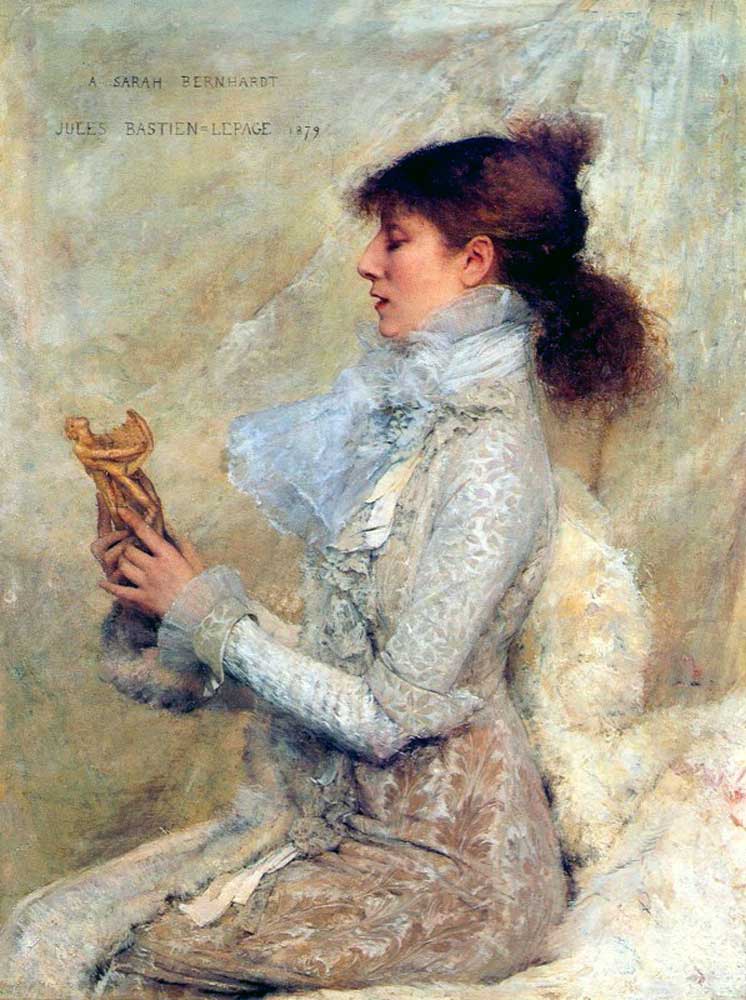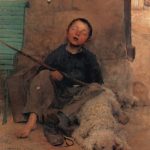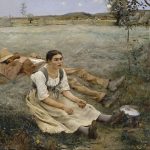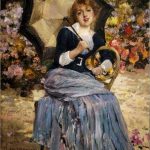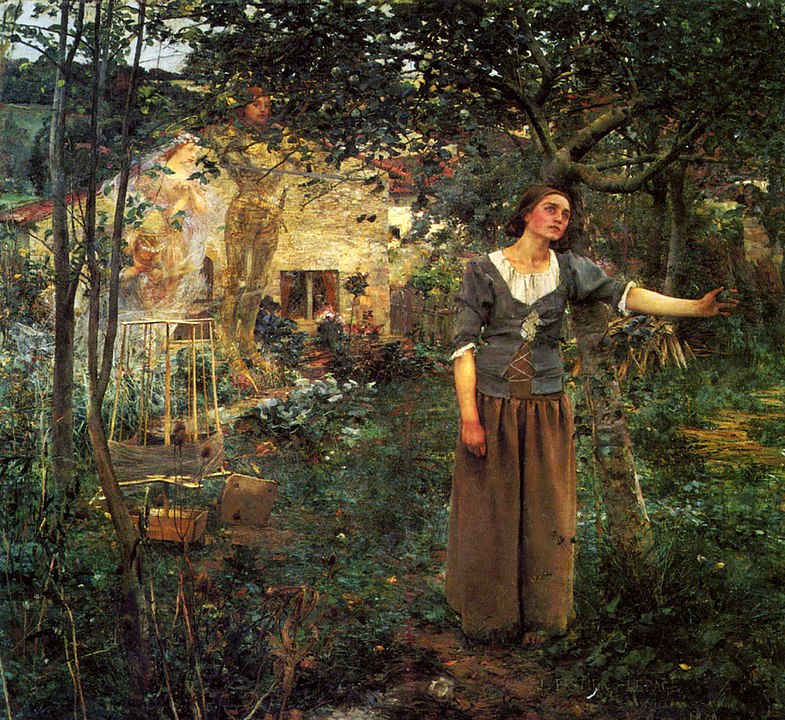
Jules Bastien-Lepage (1848–1884) was a French painter known for his naturalistic and rural-themed works. He was born in Damvillers, a small village in northeastern France. Bastien-Lepage’s artistic talent was evident from a young age, and he moved to Paris in 1867 to study at the École des Beaux-Arts under Alexandre Cabanel.
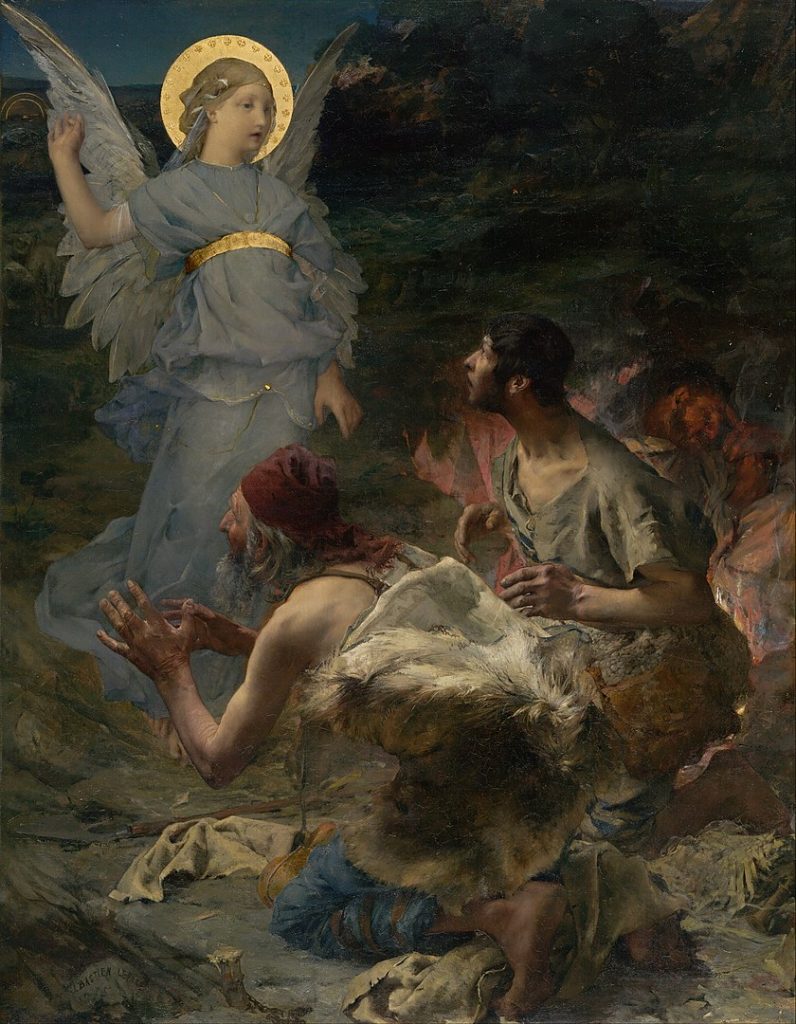
Bastien-Lepage’s style evolved over time, and he became associated with the Naturalist movement, which sought to depict everyday life in a realistic and unidealized manner. He was influenced by the work of the Barbizon school painters and the Realist movement. His paintings often featured scenes from rural life, portraying peasants and the French countryside.
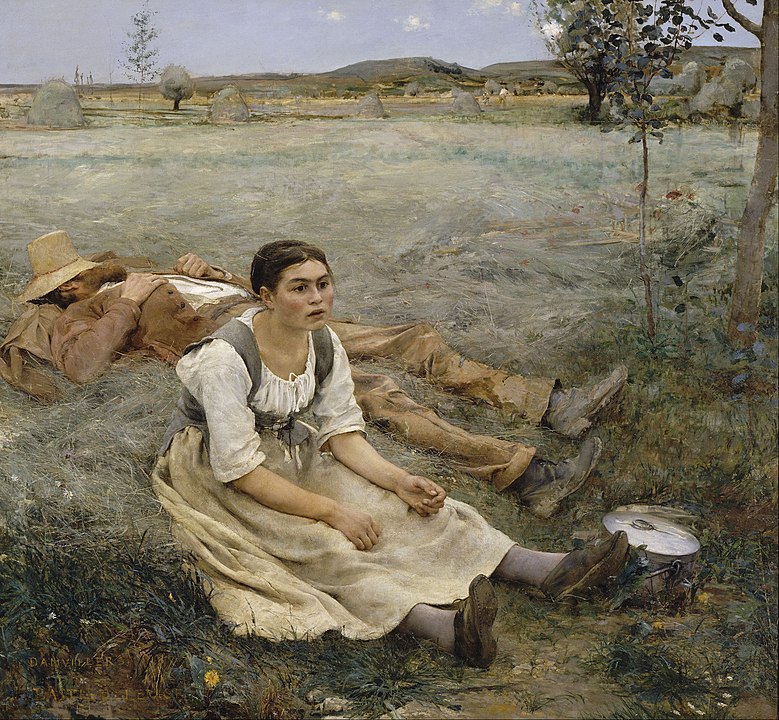
One of his most famous works is “Haymaking” (La Fenaison), which was exhibited at the Paris Salon in 1878. This painting exemplifies his commitment to portraying the lives of ordinary people in a truthful and sympathetic manner. The use of natural light and attention to detail in his works contributed to the authenticity and emotional resonance of his paintings.
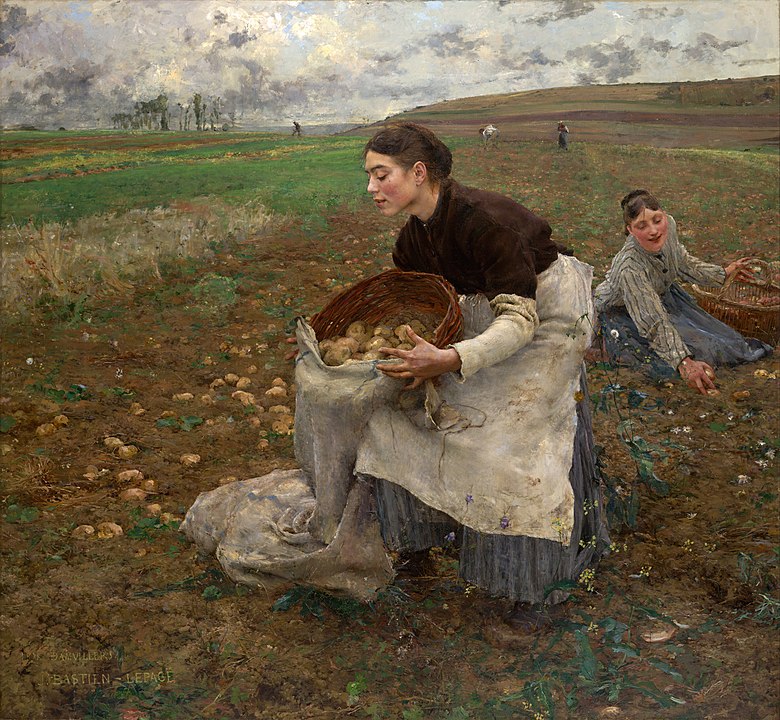
Despite his relatively short career, Bastien-Lepage made a significant impact on the art world. He sought to bridge the gap between academic traditions and the emerging trends of Realism and Impressionism. Unfortunately, he died at the young age of 36 from stomach cancer, cutting short what could have been a more extensive and influential career.
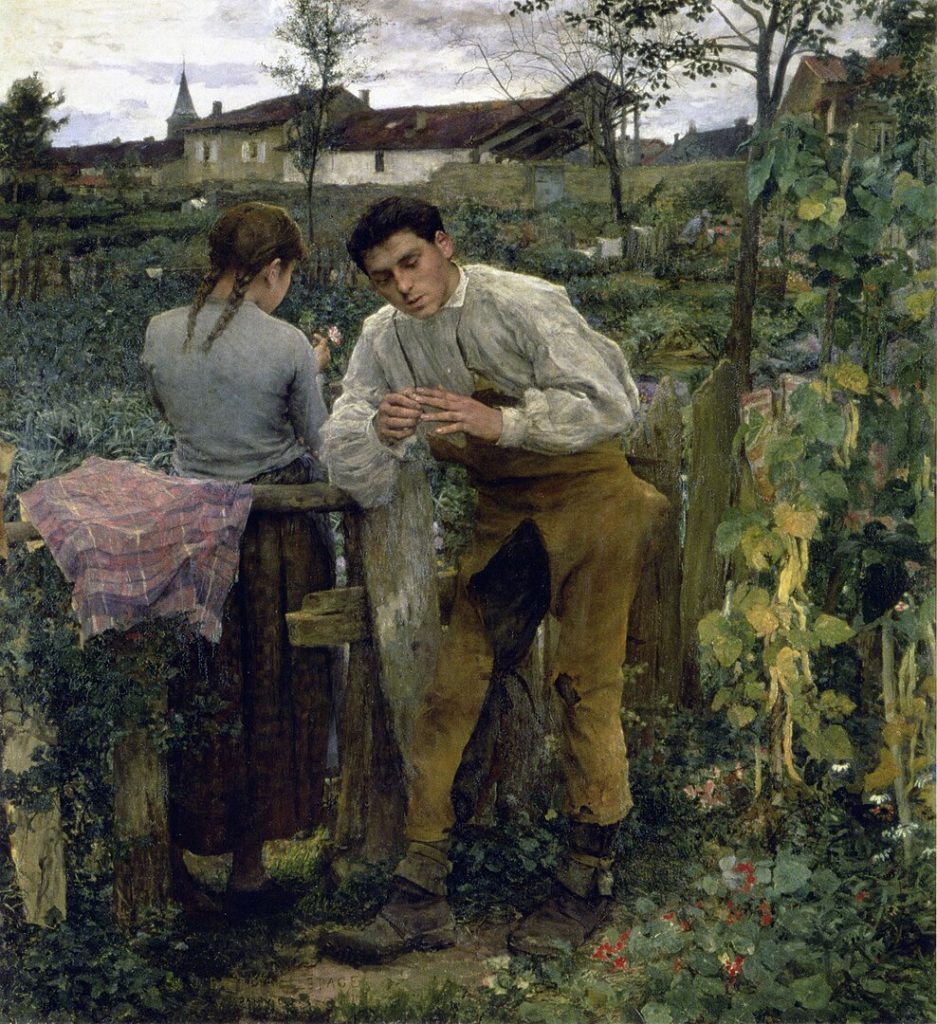
Bastien-Lepage’s legacy lives on, and his contributions to the Naturalist movement have been recognized and appreciated by later generations of artists and art enthusiasts. His work can be found in various museums and collections around the world.
